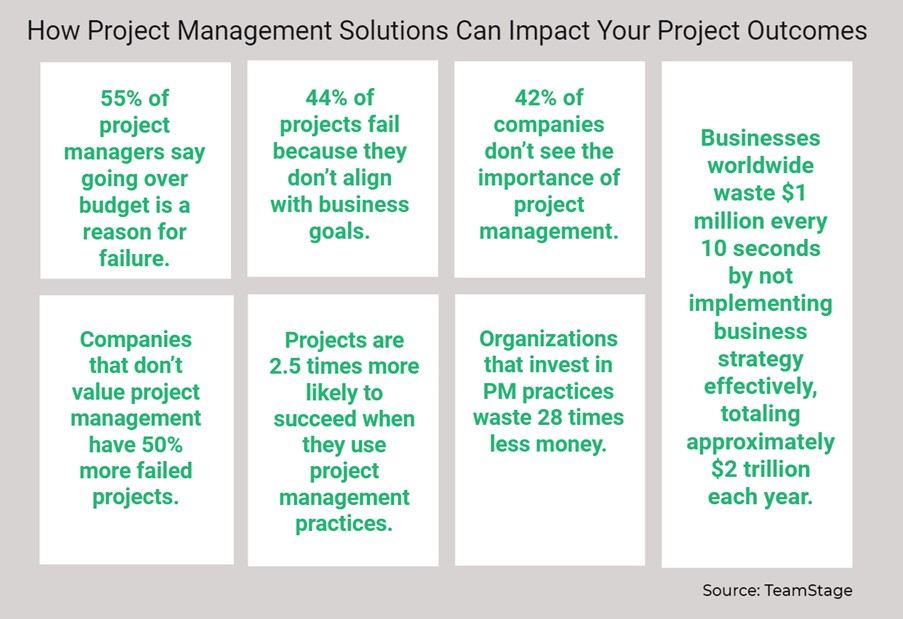
Imagine your project as a constantly shifting jigsaw puzzle, where each piece plays a vital role. As a project leader, your responsibility is not only to assemble this intricate puzzle but also to ensure that every piece fits seamlessly, creating the picture of success. This task is demanding, requiring precision and unwavering attention.
Now, envision having a solution at your disposal—one that not only provides a snapshot of your puzzle's current state but also offers insights into where each piece should go in the future. This invaluable solution is your project status reporting. It empowers you to make critical decisions well in advance, choosing the right pieces and angles long before the puzzle nears completion.
Project status reporting is more than a static snapshot; it is a dynamic blueprint, a real-time radar, and your GPS for the intricate project journey ahead. It provides clarity, helps anticipate challenges, and charts your path to success. In this article, we will explore the world of project status reporting, including its evolution, challenges, and the exciting horizon of predictive intelligence—promising to elevate your project leadership to new heights.
What is a Project Status Report?
Project status reporting serves as a timely update on your project's progress. They are concise, offering a high-level overview of project advancements and providing team members with quick insights into developments. With a well-timed project status reporting, you can ensure that your entire project team and cross-functional stakeholders are informed about what's on track, what's blocked, and what's coming next.
Regularly sharing project status reporting is vital because they keep all project stakeholders in the loop and aligned regarding your project's progress. These reports pre-emptively address the questions everyone has, even before team members have a chance to ask them. They demonstrate and convey that you are on course, instilling confidence in you and everyone involved.
The frequency of sharing project status reporting should align with your project's timeline. Some projects necessitate weekly updates, while others only warrant monthly ones. Schedule your project reports as frequently as necessary for your stakeholders. Remember, project status reporting should help you not merely react to problems but instead, proactively update stakeholders on the project's status—whether it is on track, at risk, or off track.
According to the Project Management Institute (PMI), poor communication negatively affects project success more than 50% of the time. It also causes 33% of project failures.
Below is an illustration of project performance statistics that further validate the need to incorporate advanced solutions for the success of your project.

Understanding Project Status Reporting
Project status reporting encompasses the process of collecting, analyzing, and communicating project data to stakeholders. It offers a snapshot of a project's health and performance, including its progress, risks, and issues. Effective project status reporting is pivotal for informed decision-making, resource management, and ensuring project success.
The core components of effective project status reporting involve data collection, analysis, and communication. Data collection entails gathering project data from various sources, such as project management software, team members, and stakeholders. Data analysis involves deciphering this data to identify trends, patterns, and valuable insights. Lastly, communication is the art of presenting this data clearly and succinctly to stakeholders, often through project status reporting, dashboards, and meetings.
A comprehensive project status reporting should ideally include the following key elements:
- Project name
- Reporting period
- Summary
- Timeline
- Scope
- Budget
- Status (on track, off track, at risk)
- Achievements
- Key metrics
- Blockers
- Action items and next steps
- Praise and shoutouts
- Stakeholders and project roles
The Benefits of Effective Project Status Reporting
Project status reporting is more than just a bureaucratic task; it offers a range of advantages that directly contribute to your project's success. By practicing effective reporting, you can:
- Monitoring Project Health - Project status reporting provides a clear view of your project's well-being, enabling timely course correction to meet deadlines and budgets.
- Summarizing Progress - These reports offer concise summaries of recent project activities, keeping stakeholders informed about plan adherence.
- Reducing Manual Effort - Project status reporting solutions streamline data collection and report generation, saving time for project managers.
- Facilitating Communication - Distribute reports to stakeholders, sharing key next steps and action items to ensure alignment.
- Proactive Issue Resolution - Identify and address challenges pre-emptively, avoiding disruptions to project timelines.
- Eliminating Status Meetings - Embrace asynchronous review of project status reporting, freeing up valuable time for more productive activities.

Challenges in Project Status Reporting
Project leaders encounter various challenges when reporting project status. These challenges include data quality, data integration, stakeholder engagement, and effective communication. Inaccurate or incomplete data can lead to misguided decisions and project setbacks. Integrating data from multiple sources, such as project management software, financial systems, and customer relationship management systems, can be tricky. Stakeholder engagement becomes a challenge when stakeholders have diverse needs and expectations regarding project status reporting. Additionally, presenting complex project status reporting data to non-technical stakeholders can pose communication challenges.
Therefore, project leaders should consider utilizing predictive intelligence solutions for project status reporting. Incorporating such advanced and modern solutions is imperative as they have the capability to leverage data analytics and machine learning to predict future outcomes and identify potential risks.
Steps to Write an Outstanding Project Status Report
With the foundations of effective project status reporting established, let's delve into a step-by-step guide on how to construct a remarkable project status report. This guide ensures that you maintain a consistent structure across your reports and that they remain focused on pertinent information. For project status reporting follow these steps to create an informative and compelling report:
- Streamline Your Workspace - Ensure project data is managed within a project management solution, saving time on data collection and tracking dependencies.
- Craft a Clear Title - Assign a descriptive title, often incorporating the project name and date for easy reference.
- Assess Project Health - Clearly signal project status with a color-coded system (e.g., green for on track, yellow for at risk, red for off track).
- Summarize Concisely - Provide a brief, informative summary, highlighting key insights, major obstacles, and unforeseen risks.
- Cover Key Areas - For each key project aspect, present brief updates on progress, achievements, and upcoming tasks.
- Include Relevant Links - Share links to vital documents or resources for stakeholders needing in-depth information.
- Highlight Blockers - Emphasize project hurdles and outline strategies for resolution.
- Outline Next Steps - Highlight critical next actions, commendations, or key information.
Best Practices for Project Status Reporting
To wrap up your understanding of project status reporting, consider these best practices:
- Frequency of Reporting - Your project status reporting frequency should align with your project's nature and pace. Weekly updates are suitable for fast-moving projects, while longer-term initiatives may require biweekly or monthly reports. Consistency is key.
- Stakeholder Inclusion – You must share the project status reporting with all stakeholders, including team members, sponsors, and cross-functional contributors. Even if certain individuals are not directly impacted by the report, it's essential to keep everyone informed at a high level.
- Conciseness and Relevance – You should ensure your project status reporting remains concise and focused on essential information. Highlight key areas, summarize progress, and offer links for those who require deeper insights.
- Use of Project Management Software - Embrace project management software as the central hub for your project information. It streamlines data collection and report generation while offering a repository for essential project details.
- Project Summary Report - After the project concludes, provide a final summary report that encapsulates the project's goals, successes, challenges, and lessons learned. This report serves as an executive summary for project closure.
The Synergy of Project Management and Reporting
The most significant advantage of project status reporting is its ability to reduce manual work, centralize information, and make it effortless to keep everyone up to date. If your project information is scattered across multiple solutions, even the most meticulously crafted project status reporting templates won't save you from the hassle of manually collecting data from different sources.
To achieve the full benefits of project status reporting, ensure you're using project management software as your central source of truth. With project management software, you can:
- Establish a central source of truth so that team members can easily access information about who is responsible for what and by when.
- Visualize project data seamlessly through Gantt charts, Kanban boards, calendars, or spreadsheet-style list views.
- Generate project status reporting with minimal effort, often with the click of a button.
- Provide a repository for team members who read the project status reports and wish to explore additional details.
- Access additional project information, such as your project plan, communication plan, project goals, milestones, deliverables, and more.
To fully harness the power of project status reporting, it's essential to select an advanced predictive solution that caters to your entire team's needs. This solution should not only allow cross-functional collaboration to review past status reports but also offer a bird's-eye view of the entire program or project portfolio management progress. Moreover, it should facilitate individual team members in tracking their work throughout the project lifecycle.
Conclusion
In conclusion, project status reporting is the cornerstone of successful project leadership. It involves the dynamic process of collecting, analyzing, and communicating project data to ensure clarity, anticipate challenges, and chart a path to success. Effective project status reporting, combined with the integration of advanced technology and predictive intelligence, elevates project management, reduces manual work, and empowers proactive decision-making, ultimately driving project triumph.
Modern solutions and predictive intelligence solutions, like TrueProject, have transformed the landscape, enhancing decision-making and ensuring project success. By embracing best practices and leveraging the capabilities of TrueProject’s predictive intelligence solution, project leaders can elevate their projects to new heights of achievement. It can identify potential risks and issues before they manifest, enabling proactive mitigation. TrueProject also optimizes resource allocation, identifies improvement areas, and enhances decision-making. It offers proactive insights into project health and performance, empowering project leaders to make informed decisions and mitigate risks.
More information on TrueProject at trueprojectinsight.com

About the Author:
Nisha Antony is an accomplished Senior Marketing Communications Specialist at TrueProject, a leader in predictive intelligence. With over 16 years of experience, she has worked as a Senior Analyst at Xchanging, a UK consulting firm, and as an Internal Communications Manager on a major cloud project at TE Connectivity. She is an insightful storyteller who creates engaging content on AI, machine learning, analytics, governance, project management, cloud platforms, workforce optimization, and leadership.
Endnotes
- Teamstage Team. “Project Management Statistics: Trends and Common Mistakes in 2023.” Team stage: (n.d.) https://teamstage.io/project-management-statistics/
- Ana Djurovic. “25 Astounding Project Management Statistics.” GoRemotely: March 07, 2023. https://goremotely.net/blog/project-management-statistics/
- Unenabasi Ekeruke. “How to Write a Project Status Report (Templates & Tips).” Visme: June 16, 2022. https://visme.co/blog/project-status-report/
- Lucid Content Team. “How to nail your next project status report.” LucidChart: (n.d.) https://www.lucidchart.com/blog/project-status-report





